Thingiverse
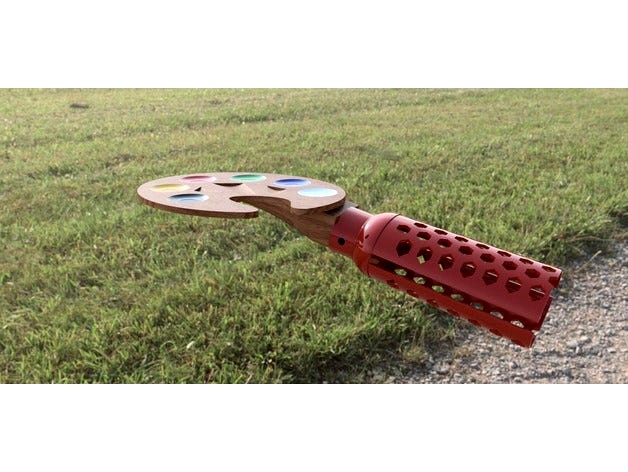
Universal Socket Prosthetic by UniversalSocketProsthetic
by Thingiverse
Last crawled date: 3 years ago
The Universal Socket Prosthetic tackles the challenge of limb differences from a completely new angle. We aim to reframe prosthetic design, allowing anyone to create a customized prosthetic system that they can adapt and use over long periods of time. Rather than attempting to design a “jack-of-all-trades” arm, our socket system uses varying custom attachments to accomplish a wide range of tasks. It consists of a mesh, sandwich interface with the residual limb, combined with a hexagonal socket that accepts a corresponding shaft on attachments. Users can resize the mesh to fit different arms, and the attachment system allows for easy development of new components with simple CAD skills.
The system is particularly well suited for children: its affordability distinguishes it from most prosthetics, which are complex and costly to make yet need to be replaced frequently as children grow. Furthermore, its ease of creation and editing allows for active use as kids grow, break things, and explore new activities. Each component of the design is large, colorful, and does not require high dexterity, so that even children younger than five can properly operate it. Our research and interviews with parents found that children did not care if the hand is skin-colored, or about the precision of the engineering. They want something that looks fun, is easy to use, and keeps them from getting left out of the activities they enjoy. Based on these insights, hobbies and sports have become a focal point of our work.
Our prosthetic can attach to anything the user wants by adding a simple 3D-printed hexagon to any object, from a baseball bat to a painter’s palette. The specific functionalities that this system enables are key to its value: while more complex prosthetics are generally designed to carry out a variety of tasks, they often do not perform any one task exceptionally well. By distributing high-level functions across a modular system, our design aims to equip prosthetic users with a toolkit for effectively and enjoyably participating in a wide range of activities. While at least one other company has pursued a similar approach to prosthetic design, specializing in sports and musical attachments, these products are very complex (which would make it difficult for kids to use) and expensive to buy and replace. Our design aims to lower these barriers, bringing high-performing prosthetics to a broader audience.
The Universal Socket Prosthetic has enormous potential for accessible impact, and we hope that a diverse community will join us in continuing to build on this concept — allowing anyone with a limb difference to explore new hobbies with ease and flexibility.
The system is particularly well suited for children: its affordability distinguishes it from most prosthetics, which are complex and costly to make yet need to be replaced frequently as children grow. Furthermore, its ease of creation and editing allows for active use as kids grow, break things, and explore new activities. Each component of the design is large, colorful, and does not require high dexterity, so that even children younger than five can properly operate it. Our research and interviews with parents found that children did not care if the hand is skin-colored, or about the precision of the engineering. They want something that looks fun, is easy to use, and keeps them from getting left out of the activities they enjoy. Based on these insights, hobbies and sports have become a focal point of our work.
Our prosthetic can attach to anything the user wants by adding a simple 3D-printed hexagon to any object, from a baseball bat to a painter’s palette. The specific functionalities that this system enables are key to its value: while more complex prosthetics are generally designed to carry out a variety of tasks, they often do not perform any one task exceptionally well. By distributing high-level functions across a modular system, our design aims to equip prosthetic users with a toolkit for effectively and enjoyably participating in a wide range of activities. While at least one other company has pursued a similar approach to prosthetic design, specializing in sports and musical attachments, these products are very complex (which would make it difficult for kids to use) and expensive to buy and replace. Our design aims to lower these barriers, bringing high-performing prosthetics to a broader audience.
The Universal Socket Prosthetic has enormous potential for accessible impact, and we hope that a diverse community will join us in continuing to build on this concept — allowing anyone with a limb difference to explore new hobbies with ease and flexibility.
Similar models
grabcad
free

Prosthetic limb (3D Printable)
...ced so i attached this. we printed this by 3d printer and then attached the different motars and arduino systems for functioning.
thingiverse
free

Tool Holder by arespineli
...ious types of items. this was created for an engineering project at spu.
o e-nable
o hand
o prosthetic
o spu_engineering
grabcad
free

bionic leg - BIOTEZ
...eds dollars. and we have 2 type of bionic leg which can be 100% 3d printing . or with 50% aluminum. we have also costumes parts .
thingiverse
free

Utensil attachment for prosthetic hand by leannatemple14
...shapes of utensils. the printed fork is not my design; i used the "simple design fork" from user "italymaker"
thingiverse
free

Stylus slot prosthetic by ebubar
... the user.
this update attempts to make the design slightly more anthropomorphic and support has been modeled in using meshmixer.
thingiverse
free

Computer Mouse Prosthetic Attachment by Garrettspu
...r a prosthetic hand developed here at spu. it attaches to the prosthetic and allows the user to operate a computer mouse with it.
grabcad
free

Prosthetic Leg S
...umatics/hydraulics. it gives the user a better propulsion than the cheetah blades, allowing for faster and more powerful movement
thingiverse
free

Prosthetic Hand for designers to experience by MacGyvrBot
... at rochester institute of technology by e-nable volunteers and on other open-source designs shared within the e-nable community.
grabcad
free

Ball and Socket
...ball and socket
grabcad
a model of ball and socket joint and prosthetic limb.
clear visualization of the joint.
grabcad
free

Multi-Function attachment for a prosthetic arm
...attachment specifically for that and multiple sub-attachments to support it.
prototyping : could be 3d printed or made of wood.
Prosthetic
turbosquid
$49

Prosthetic Arm
...uid
royalty free 3d model prosthetic arm for download as max on turbosquid: 3d models for games, architecture, videos. (1556291)
turbosquid
$20

Prosthetic for small dogs 3D print model v2
...osthesis for small dogs 3d print model v2 for download as stl on turbosquid: 3d models for games, architecture, videos. (1290474)
3d_export
$10

knee joint prosthesis with guides sample of individual prosthetics
...mm, 20 grams tibial component: ti6al4v material, 76×77×70 mm, 90 grams femoral component: cocrmo material, 70×52×62 mm, 290 grams
3d_export
$5
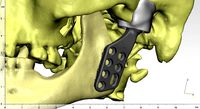
individual tmj prosthesis real operation
...left tmj. it consists of the following parts:: * prosthetic condylar process (ti6al4v); * joint cavity prosthesis (high molecular...
3d_export
$44
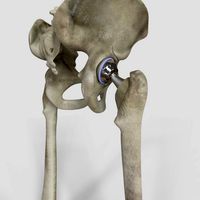
Hip Replacement
...damaged bone and cartilage is removed and replaced with prosthetic components. the damaged femoral head is removed and replaced...
3d_export
$10

itap implant osteointegration operation
...the implant. tested on more than 15 operations. itap prosthetic is an installation of "intraosseous transcutaneous amputation prosthesis". in...
thingiverse
free

Prosthetic arm
...prosthetic arm
thingiverse
prosthetics arm
3d printable
thingiverse
free

Prosthetic Arm
...prosthetic arm
thingiverse
a prosthetic arm purely for asthetic purposes. it was made for a client's wedding.
thingiverse
free

Dog Prosthetic by 3DESIGNER27
...animal allies. cheap alternative for dog prosthetic limb. scale in your slicer to fit the dog you are looking to apply prosthetic
thingiverse
free

XOR Prosthetic Hand by chandlersupple
...xor prosthetic hand by chandlersupple
thingiverse
prosthetic hand - two part
Socket
archibase_planet
free

Socket
...socket
archibase planet
socket plug socket wall outlet
socket - 3d model (*.gsm+*.3ds) for interior 3d visualization.
archibase_planet
free
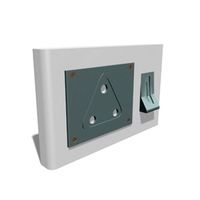
Socket
...socket
archibase planet
socket
socket - 3d model for interior 3d visualization.
archibase_planet
free
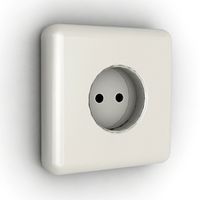
Socket
...socket
archibase planet
socket plug socket wall outlet
socket n210411 - 3d model (*.gsm+*.3ds) for interior 3d visualization.
archibase_planet
free
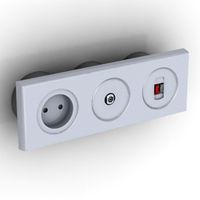
Socket
...socket
archibase planet
socket plug socket wall outlet
socket 1 - 3d model (*.gsm+*.3ds) for interior 3d visualization.
archibase_planet
free

Socket
...socket
archibase planet
socket plug socket wall outlet
socket 3 - 3d model (*.gsm+*.3ds) for interior 3d visualization.
archibase_planet
free

Socket
...socket
archibase planet
socket plug socket wall outlet
socket 4 - 3d model (*.gsm+*.3ds) for interior 3d visualization.
archibase_planet
free
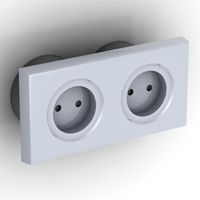
Socket
...socket
archibase planet
socket plug socket wall outlet
socket 2 - 3d model (*.gsm+*.3ds) for interior 3d visualization.
archibase_planet
free
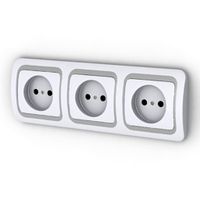
Socket
...socket
archibase planet
socket plug socket wall outlet
socket triple - 3d model (*.gsm+*.3ds) for interior 3d visualization.
archibase_planet
free

Socket
...socket
archibase planet
socket plug socket wall outlet
socket single - 3d model (*.gsm+*.3ds) for interior 3d visualization.
archibase_planet
free

Socket
...socket
archibase planet
socket plug socket wall outlet
socket twin - 3d model (*.gsm+*.3ds) for interior 3d visualization.
Universal
3d_export
$20

university
...university
3dexport
university model with textures.
3d_export
free

steven universe
...steven universe
3dexport
steven universe
3ddd
free

Quasar Universe
...quasar universe
3ddd
quasar
люстра quasar universe
turbosquid
$65

Universal
... available on turbo squid, the world's leading provider of digital 3d models for visualization, films, television, and games.
turbosquid
$65

University
... available on turbo squid, the world's leading provider of digital 3d models for visualization, films, television, and games.
turbosquid
$5

Universal
... available on turbo squid, the world's leading provider of digital 3d models for visualization, films, television, and games.
3d_export
$40

Graphics Universe Universe Flares 3D Model
...graphics universe universe flares 3d model
3dexport
textures
graphics universe universe flares 3d model crashangel 97554 3dexport
3d_export
$65

universe
...universe
3dexport
simple rendering of the scene file
3d_export
$65

university
...university
3dexport
simple rendering of the scene file
3ddd
$1

Gala Universal раковина
...universal раковина
3ddd
gala , universal
раковина
производитель gala
коллекция universal
